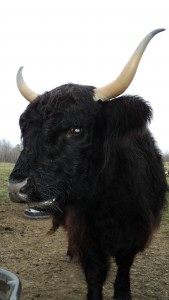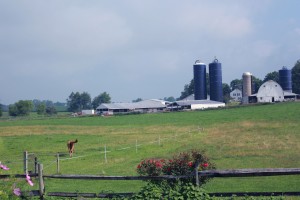Joe Trumpey, an associate professor at the University of Michigan’s Stamps School of Art and Design, curated an exhibit this past fall titled “Farmer as Creative”. It featured tools and implements created by farmers across the world and over the years to serve many and varied needs. For me as a non-farmer, his description of the exhibit provides insight into farmers and what it means to farm:
“Food comes from farms. Producing food requires farmers to work creatively. Each farmer has his/her own goals in mind – perhaps to become more productive or efficient, to improve soil health or water quality, or to breed sounder livestock lines. According to their own skills and interests they invent new tools, build new machines, reorganize infrastructure, utilize innovative practices, develop new markets, reclaim brown fields, cook good food, build new community, or organize social structures. Mini-farm, mega-farm, organic, conventional, individual, family-run, urban, rural, chaotic, meticulous, tractor-powered, animal-powered – farming is a diverse and creative process.”
(By the way, Joe knows about the “farmer as creative” firsthand: he and his family

Livestock on Trumpey Farm.
live on a farm in Jackson County, conserved by a Legacy easement, where they grow enough organic produce and heirloom livestock to feed the entire family throughout the year.)
Joe’s words about farms and farmers have stuck with me over the past few months. While writing about the newly-conserved Koenn farm for Legacy’s spring newsletter, I found myself thinking of them again. As Matt Koenn, chair of the Washtenaw County Conservation District board, described some of his farming practices to me, it was clear that the way he farms involves an immense amount of planning, adaptation, and problem-solving. It was also clear to me that while the practices he uses may not be part of the general public’s image of “conventional” farming, they are increasingly common. Using cover crops, conservation tillage, and targeted treatment of soils and crops leads to increased production that’s easier on the environment, but it doesn’t happen magically.

The Koenn farm
Matt tells me he’s been farming his whole life. When he was away from the family farm for about five years, it was to receive a college education that would build his agricultural and business knowledge. Like many of his farming neighbors, each and every year he builds on that education, responds to the challenges the natural world throws at any farmer, and plans ideas to try in the years to come. He works hard to provide each corner of his farm with the individualized care it needs, while seeking not to damage the resources that allow the entire farm (and its neighboring natural habitats) to thrive year after year.
Agriculture can be a polarizing topic these days. That isn’t surprising. Like anything and everything we humans do on the land, it has the potential to harm our fellow living beings and the systems which support them. And while we use land every second of every day – stand on it, walk on it, drive on it, live on it – not one of us would be alive without food which grows from the land.
Amidst all that, let’s take a moment to remember that farmers are people, too – creative, diverse, loving, caring, knowledgeable, and innovative human beings. We, as a creative community of human beings, are indeed moving forward together one step at a time.

 RSS Feed
RSS Feed
Nice. Good work Robin.